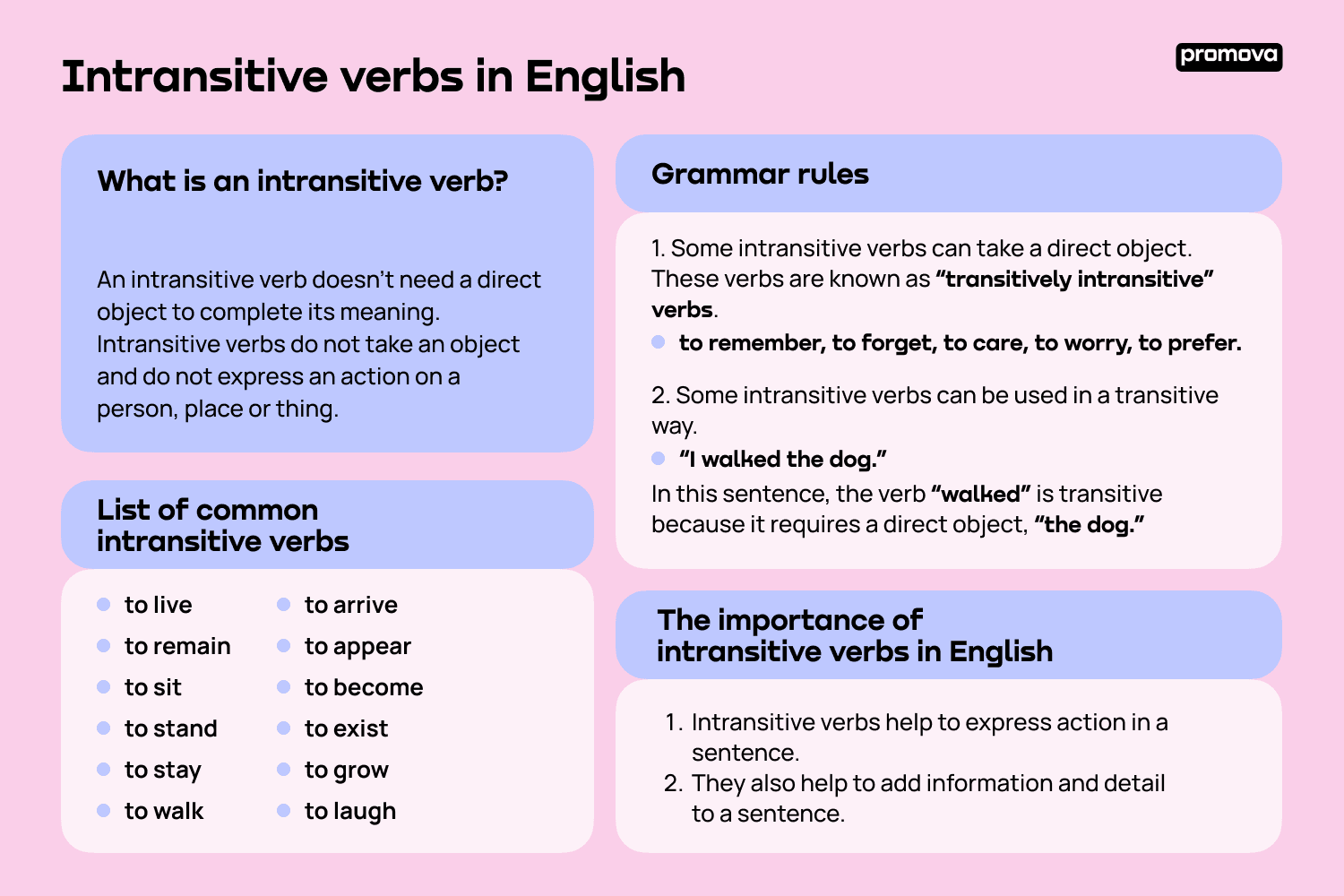Verbs are an essential part of any sentence, as they express actions or states of being. Understanding the difference between transitive and intransitive verbs is crucial in mastering the English language. Transitive and intransitive verbs function differently in a sentence, and being able to identify them can help improve your writing and communication skills.
Transitive verbs require a direct object to complete their meaning, while intransitive verbs do not. Recognizing whether a verb is transitive or intransitive is key to constructing grammatically correct sentences.
Identifying Transitive and Intransitive Verbs
Transitive verbs are action verbs that require a direct object to receive the action. For example, in the sentence “She ate an apple,” the verb “ate” is transitive because it has a direct object, which is “an apple.” Without the direct object, the sentence would be incomplete. In contrast, intransitive verbs do not require a direct object to complete their meaning. For instance, in the sentence “He sleeps peacefully,” the verb “sleeps” is intransitive as it does not need a direct object. The verb conveys a complete thought without requiring any additional information.
One way to identify transitive verbs is to ask the question “what?” or “whom?” after the verb. If the answer completes the action of the verb, it is likely a transitive verb. In the sentence “The cat chased the mouse,” asking “What did the cat chase?” would lead to the direct object “the mouse,” indicating that “chased” is a transitive verb. On the other hand, intransitive verbs do not have a direct object that completes the action. For example, in the sentence “The sun rises in the east,” the verb “rises” does not require a direct object to convey its meaning.
Some verbs can be both transitive and intransitive, depending on how they are used in a sentence. For example, the verb “run” can be transitive when followed by a direct object, as in “She runs a marathon,” or intransitive when used without a direct object, as in “He runs every morning.” Understanding the context and structure of the sentence is essential in determining whether a verb is transitive or intransitive.
In conclusion, identifying transitive and intransitive verbs is essential for constructing clear and concise sentences. By recognizing the difference between the two types of verbs, you can enhance your writing skills and communicate more effectively. Practice identifying transitive and intransitive verbs in sentences to improve your grammar and language proficiency.
